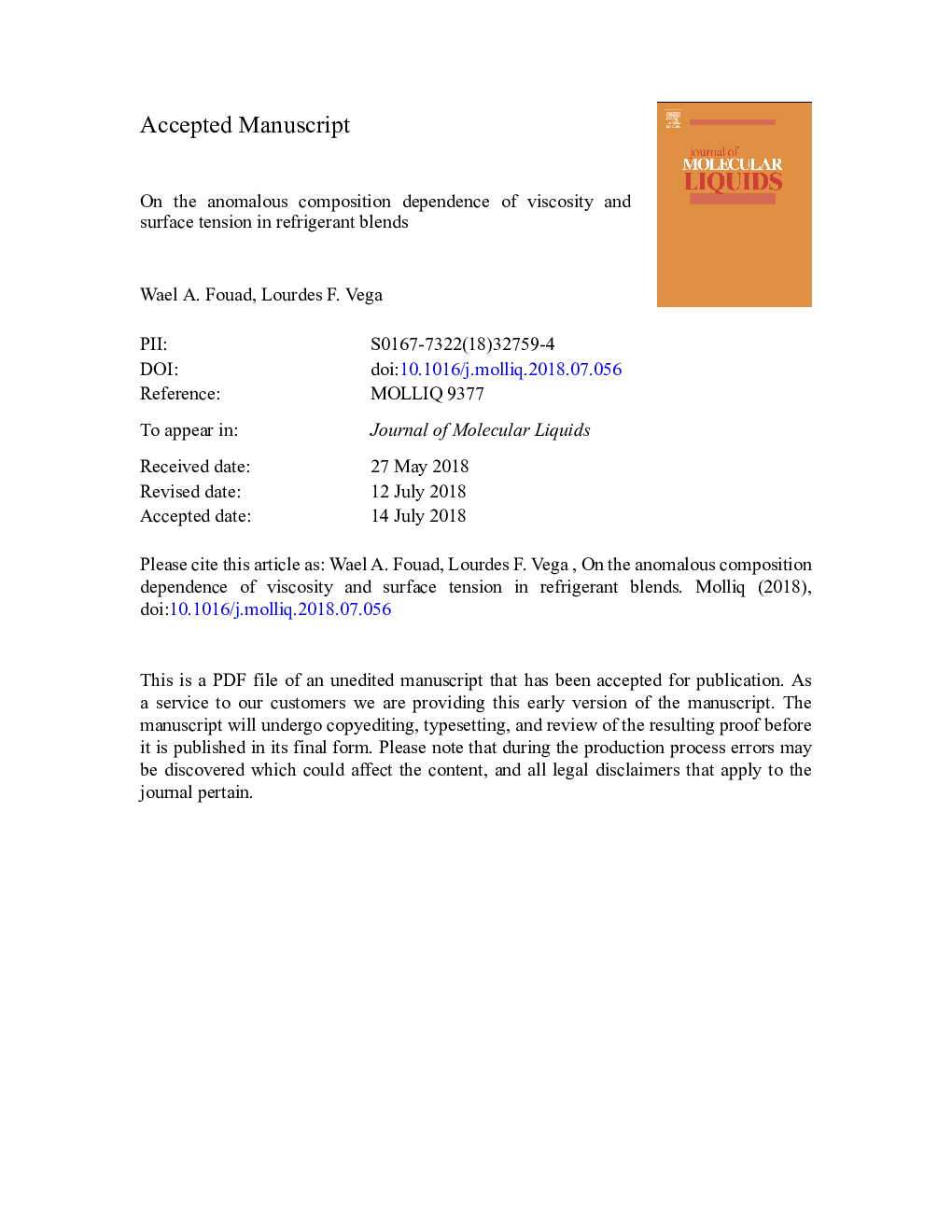| Article ID | Journal | Published Year | Pages | File Type |
|---|---|---|---|---|
| 7841679 | Journal of Molecular Liquids | 2018 | 36 Pages |
Abstract
The Polar PC-SAFT equation of state coupled with DGT and excess entropy scaling was applied to predict the phase, interfacial and transport properties of refrigerant blends. Results show the presence of several thermophysical anomalies in systems under consideration. The literature has always linked aneotropic behavior at the interface (extrema in surface tension) to azeotropic behavior (extrema in vapor pressure) at the bulk. However, a minimum in surface tension as a function of composition was predicted in this work for R-32â¯+â¯R-1234yf zeotropic mixture. The system also exhibits a significant positive excess volume in comparison to other R-32 binary mixtures. The latter phenomena indicate the presence of excessively weak intermolecular interactions between both species. Furthermore, a minimum in viscosity as a function of composition was predicted for R-32â¯+â¯R-143a binary mixture. This was attributed to the homogenous distribution of charges found in both symmetrical molecules which leads to molecular repulsion and structure breaking. On contrary, a maximum in viscosity as a function of composition was predicted for R-32â¯+â¯R-125 binary mixture. This was attributed to strong charge-charge interactions between the highly fluorinated R-125 molecule and R-32. The latter promotes structure making as evidenced by the system's negative excess volume. A maximum in the viscosity was also predicted for R-152aâ¯+â¯R-1234ze(E) binary mixture. Aggregate formation is promoted in this system due to the strong charge-charge interaction between the unshielded fluorine atom in R-1234ze(E) and the undisturbed methyl group in R-152a.
Related Topics
Physical Sciences and Engineering
Chemistry
Physical and Theoretical Chemistry
Authors
Wael A. Fouad, Lourdes F. Vega,
